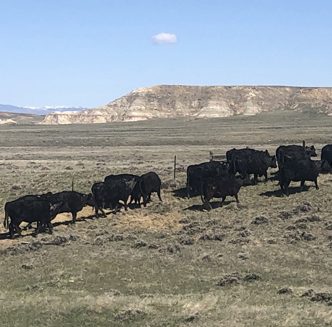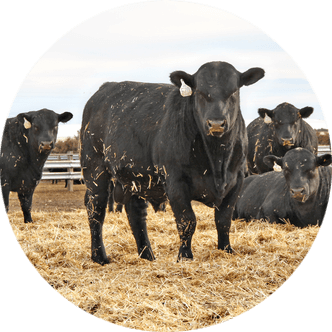Traceback demand, Markets require ID
In the latter part of 2009 key national governments have made moves to transition their animal identification requirements from voluntary to mandatory – moves that are likely to impact U.S. policy.
“It’s a concern of foreign countries, and we’re seeing a real progressive movement toward animal identification internationally,” says Ann Wittmann of the Wyoming Beef Council. “It’s important for our producers to be aware those countries are moving in that direction. As such a large exporter of a high quality product, I think the expectation is that the U.S. will follow along.”
Although the U.S. House of Representatives voted to end funding for the National Animal Identification System as part of the Farm Bill, a joint House-Senate conference committee agreed in Fall 2009 to continue funding at $5.3 million for fiscal year 2010-2011. That’s a reduction from the $14.2 authorized for 2008, and less than the $14.6 the Senate had approved.
Brazil announced this fall that by 2011 all livestock producers will be required to participate in a mandatory traceability system. Real-time electronic record keeping will not be mandated, but rather standardized record keeping with data that can be transmitted via Internet portals to centralized databases.
South Korea has instituted a traceback system on domestically raised beef, and has indicated that it would require traceback on imported product by 2010.
“It’s happening now,” says Wittmann.
The Japanese government has had a domestic animal identification system in place for several years, and on three different occasions the then-minority political party, the Democratic Party of Japan, had unsuccessfully tried to pass legislation that would require the same level of traceability for imports.
“Each country is different, but I think we can expect international standards to come along, and we ought to be prepared to be a part of that discussion,” says Wittman, noting that current requirements are based on individual country preferences.
The National Cattleman’s Beef Association (NCBA) indicates to its producers that widening exports to Japan could add $50 per head to a producer’s bottom line. Losing the Japanese market has been shown to cost producers about $180 per head, and since the margin of profit per head in a good year fluctuates between $50 to $100 per head, the economic impact of the export market is hard to deny, says NCBA.
According to Food Safety News, it is believed the Korean market alone could grow to become a $1 billion per year market.
“Global beef consumption is expected to increase by 68 percent by 2018,” says Wittman. “It’s important for the U.S. to focus on those markets to retain profitability and maintain the future of our industry.”
She says if the U.S. doesn’t step in, developing countries will experience gains because their buying power is increasing. She names Botswana, which has a life expectancy of only 49 years, as a country that has complete identification and traceback capabilities.
According to southeast Wyoming rancher Irv Petsch, who also represents Wyoming on the U.S. Meat Export Federation Board of Directors, the association’s been working toward age and source verification for some time.
“To export to most countries right now, we have to have it,” he says of the program. “That’s one of the problems we’re running into – that we have markets in some countries but we lack a continual flow of age and source verified cattle to supply them.”
“If we’re going to step up and export more meat, the markets are coming online and we need to have the continuous supply to handle them,” continues Petsch, adding he thinks age and source verification will do nothing but good for the U.S. beef industry.
Although some producers may not see a tremendous premium when they sell their calves, Petsch says he thinks the benefit will be the opening of more trade and exports, which will come back to the producer and feeder.
“Right now the export market accounts for $139 of each carcass, and if we can export more and meet the requirements those countries want, the value will only go up,” he explains. “We’re going to see a small premium on the front end, but a big premium in export markets.”
Of the timeline to get enough U.S. cattle verified, Petsch says, “It’s a big ship and it takes a while to get it turned around. The long-term goal is getting more beef exports, and we’ve got to meet the requirements the countries set. We can’t tell them to take our beef as it is, because Brazilian and Australian beef is there to step in, and a lot of smaller countries are working on verification.”
“There’s no reason, with our technology, financial status and intelligence level that we can’t do the same thing,” says Petsch. “To do as good as we can, I think we need to get the verification and traceback system in line.”
Petsch says USMEF is working hard to open export markets to U.S. beef. “The only thing that would hold us back once they’re open is not being able to provide the type of cattle certain countries are looking for. As these markets open we need to have the cattle available to ship.”
Christy Hemken is managing editor of the Wyoming Livestock Roundup and can be reached at christy@wylr.net.





